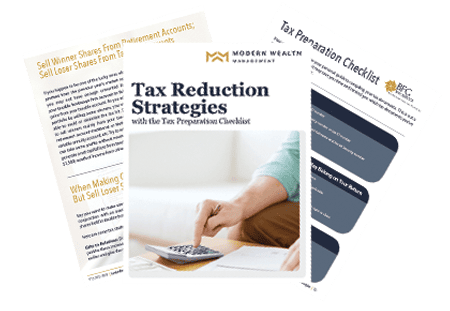What Is the Social Security Fairness Act?
Key Points – What Is the Social Security Fairness Act?
- The Repeal of the Windfall Elimination Provision and Government Pension Offset
- Who Will Be Impacted by the Social Security Fairness Act?
- Insight About the Social Security Fairness Act from Mary Beth Franklin
- 6-Minute Read | 33-Minute Watch
What Is the Social Security Fairness Act?
On January 5, 2025, then-President Joe Biden signed the Social Security Fairness Act into law.1 The law expands Social Security benefits that were previously unavailable for government workers by repealing the Windfall Elimination Provision (WEP) and Government Pension Offset (GPO) retroactive to January 2024.2, 3 The WEP and GPO reduced or eliminated Social Security benefits for more than 3.2 million people, primarily teachers, firefighters, public safety officers, and federal employees.
We were honored to have long-time personal finance journalist Mary Beth Franklin, CFP® join Martin James, CPA, PFS, and Dean Barber on America’s Wealth Management Show to help explain what the Social Security Fairness Act is and who it will impact.
Schedule a Meeting Get the Retirement Plan Checklist
Who Would the Social Security Fairness Act Affect?
The last time there was Social Security reform was in 1983.4 That was when the Government Pension Offset and Windfall Elimination Provision were enacted. Other significant Social Security changes in 1983 included gradually raising Full Retirement Age from 65 to 67 and making Social Security benefits taxable for high-income beneficiaries.5
But let’s focus on the GPO and WEP and who they impacted. If you have worked for public government, haven’t been paying FICA taxes, and receive a pension from that government, you may have been affected by these offset rules that reduced or eliminated your social Security benefits.
Windfall Elimination Provision (WEP)
The Windfall Elimination Provision applied to workers who worked long enough and covered employment — generally at least 10 years in the private sector — to be eligible for a future Social Security benefit. However, they also had a public pension based on work where they didn’t pay FICA taxes. People affected by the WEP technically received a Social Security benefit, but it would be reduced by up to half the amount of their public pension.
Government Pension Offset (GPO)
The Government Pension Offset applied to spouses and survivors who did not have a Social Security benefit of their own, but who normally would be entitled to a spousal or survivor benefit based on their spouse’s work record.
Mary Beth gave a hypothetical example of a teacher in Texas who has paid into the Texas teacher retirement system and hasn’t worked under covered Social Security employment. However, maybe their spouse did. The teacher might be wondering why they haven’t been able to get a spousal or survivor benefit. That’s because of the GPO.
The GPO reduced any potential Social Security benefit by two-thirds of the amount of an individual’s public pension. Let’s say the Texas teacher had a pension of $6,000 a month. The GPO subtracted $4,000 from any potential Social Security or spousal benefit, which effectively would wipe it out.
Retroactive Lump Sum Payouts
When we recorded the America’s Wealth Management Show episode with Mary Beth on February 18, 2025, there was still a lot of uncertainty about the Social Security Fairness Act. Mary Beth mentioned that it could take a year or longer for the SSA to deliver retroactive lump sum payouts and increase benefits going forward due to the lack of manpower at the SSA to do the calculations.
Well, fast forward a week later. On February 25, 2025, the Social Security Administration announced that it would start paying retroactive benefits immediately and increase monthly benefit payments to individuals who have had their benefits reduced or eliminated by the WEP or GPO.6 Additionally, the SSA shared that many of the individuals that had been impacted by the GPO or WEP will receive higher monthly benefits beginning in April. The amount of the adjusted benefit will be contingent on the type of Social Security benefit and the individual’s pension amount.
The SSA stated that it has been “able to expedite payments using automation.7” However, it could take longer for the SSA to process retroactive benefits and increased monthly benefits for more complex cases. The SSA’s goal is for all beneficiary records to be up to date by early November 2025.
If you’ve been impacted by the WEP and already applied for Social Security benefits, Mary Beth says that you shouldn’t need to take any action because you’re already enrolled in the Social Security System. It’s a different story for people who have been affected by the GPO, according to Mary Beth. That’s because many of them have never applied for Social Security benefits because they knew they wouldn’t receive them. She encourages those people to immediately file for a spousal or survivor benefit to establish a filing date.
Back to the Example of the Texas Teacher
Let’s circle back to Mary Beth’s hypothetical example of the Texas teacher and their spouse. It’s important for the teacher to understand that their spousal benefit won’t be half of their spouse’s. The spousal benefit would be worth up to 50% of the working spouse’s full retirement age benefit amount — regardless of when the spouse took it — plus any intervening cost-of-living adjustments (COLAs).
Maybe the teacher’s spouse claimed reduced benefits at 62. If the spouse’s full retirement age was 66, they claimed four years early and their benefit was only worth 75% of the full retirement age benefit. However, a spousal benefit would still be worth up to 50% of the full retirement age benefit amount plus COLAs if the teacher claimed it at their full retirement age or later.
If the teacher’s spouse delayed claiming Social Security until age 70, they would’ve received an extra 8% a year in delayed retirement credits. Their benefit would have been worth 132% of their full retirement age benefit amount. But again, the spousal benefit would still been worth up to 50% of the full retirement age benefit amount plus COLAs.
How the Social Security Fairness Act Could Impact Your 2025 Tax Return
While the retroactive lump sum and higher monthly benefits could be a welcome boost in retirement cashflow, keep in mind how that could impact your tax situation. As a CPA, Marty is always thinking about people’s Modified Adjusted Gross Income, marginal tax brackets, and the implications of stealth taxes, such as the amount of Social Security benefits added to gross income, Medicare Income-Related Monthly Adjustment Amount (IRMAA), and Net Investment Income Tax (NIIT).
That’s why he’s passionate about building forward-looking tax plans to plan for the possibility of those stealth taxes and utilize strategies such as Roth conversions that may help reduce taxation over an individual’s lifetime rather than a year-by-year basis. The strategic use of Roth accounts may help reduce the impact of Required Minimum Distributions for some investors.
Download our Roth Conversion Case Studies and Tax Reduction Strategies white papers to help determine what tax planning strategies to consider and remember to consult a qualified tax professional prior to taking any action.


It’s important to realize that up to 85% of your Social Security benefits can be taxable at your ordinary income tax rate. If you receive a retroactive Social Security benefits dating back to January 2024 as a lump sum, that could significantly increase your income taxes, NIIT, and Medicare Parts B and D premiums (IRMAA).
Do You Have Any Questions About the Social Security Fairness Act?
Along with answering any questions you may have about the Social Security Fairness Act, we want to make sure that you’re aware that we’re currently in a very low tax-rate environment under the Tax Cuts and Jobs Act. The TCJA was signed into law by President Trump during his first term in office, but it’s scheduled to sunset after 2025 if Congress does nothing by the end of the year.
The Republican-controlled Congress is expected to extend many of the TCJA provisions, but it remains to be seen how it will all shake out for the remainder of the year.8 One thing our team is certain of is that we will continue to keep you apprised of the latest financial planning updates — whether it’s tax law, Social Security reform, etc. — and how they could impact you.
Everyone’s situation is different, which is why we build comprehensive financial plans that are tailored to each individual’s goals. If you’ve been impacted by the repeal WEP or GPO, start a conversation with our team below. We want to make sure that you have a financial plan in place that considers these key changes under the Social Security Fairness Act.
Resources Mentioned in This Article
- Maximizing Social Security Benefits
- Mary Beth Franklin’s Appearance on America’s Wealth Management Show
- Retirement Cash Flow: What You Need to Know
- 2025 401(k) and IRA Contribution Limits
- 2025 Tax Brackets: IRS Makes Inflation Adjustments
- Tax Strategies for High Income Earners
- What Is IRMAA? Medicare Income-Related Monthly Adjustment Amount
- 5 Tax Secrets Retirees Need to Know
- Avoiding Costly Mistakes When Claiming Social Security with Ken Sokol
- 5 Reasons to Convert to a Roth IRA
- Tax Planning Tips with Corey Hulstein, CPA, and Marty James, CPA, PFS
- How Do I Pay Less Taxes?
- Do I Need a CPA?
- Taxes on Retirement Income
- Social Security Administration Announces 2.5% COLA Increase for 2025
- Claiming Social Security at 62, 67, or 70
- Required Minimum Distribution Case Study
- What If We Go Back to Old Tax Rates?
- 5 Types of Financial Plans
Downloads
Other Sources
[1] https://www.ssa.gov/benefits/retirement/social-security-fairness-act.html?tl=0
[2] https://www.ssa.gov/policy/docs/program-explainers/windfall-elimination-provision.html
[3] https://www.ssa.gov/pubs/EN-05-10007.pdf
[4] https://www.ssa.gov/history/1983amend.html
[5] https://www.ssa.gov/history/briefhistory3.html
[6] https://www.ssa.gov/news/press/releases/2025/#2025-02-25-a
[7] https://www.ssa.gov/benefits/retirement/social-security-fairness-act.html?tl=2
Investment advisory services offered through Modern Wealth Management, Inc., a Registered Investment Adviser.
The views expressed represent the opinion of Modern Wealth Management a Registered Investment Advisor. Information provided is for illustrative purposes only and does not constitute investment, tax, or legal advice. Modern Wealth Management does not accept any liability for the use of the information discussed. Consult with a qualified financial, legal, or tax professional prior to taking any action.